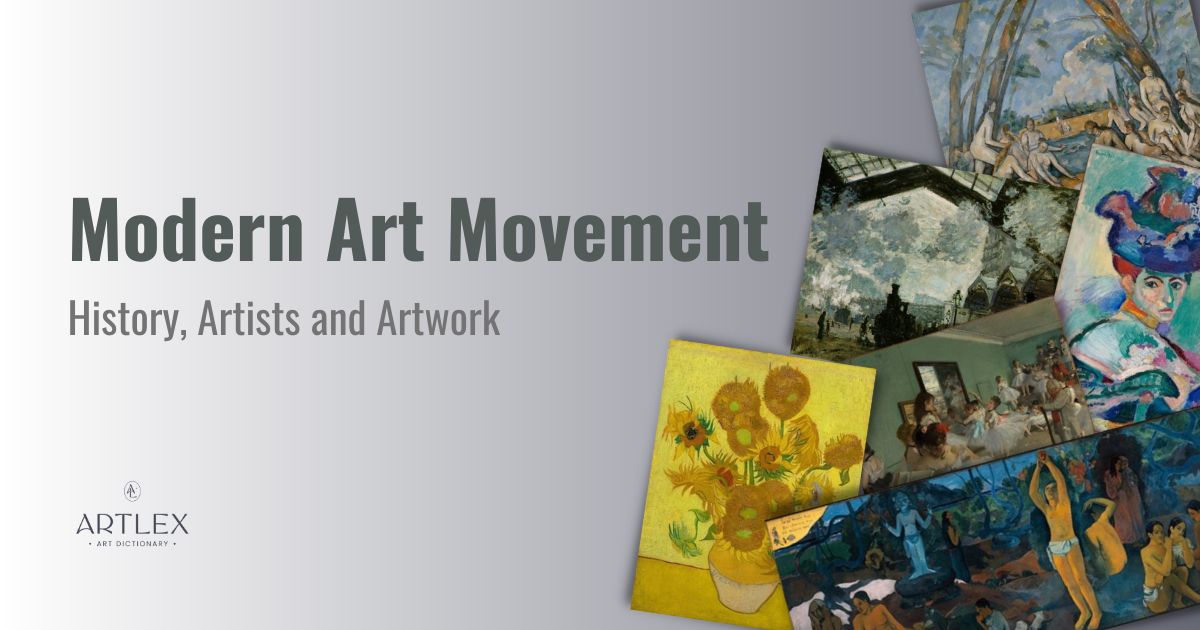What is Modern Art?
Modern art is an art history period between the late 19th century until the mid-20th century that encompassed many different styles, in painting, sculpture, decorative arts and architecture. Modern art is thought to have began with Impressionism in 1870, and continued through the several styles including Post-Impressionism, Fauvism, Expressionism, Cubism, Futurism, Dadaism, Surrealism, Abstract Expressionism and ending with Pop Art in the 1960s.
Famous Works of Modern Western Art
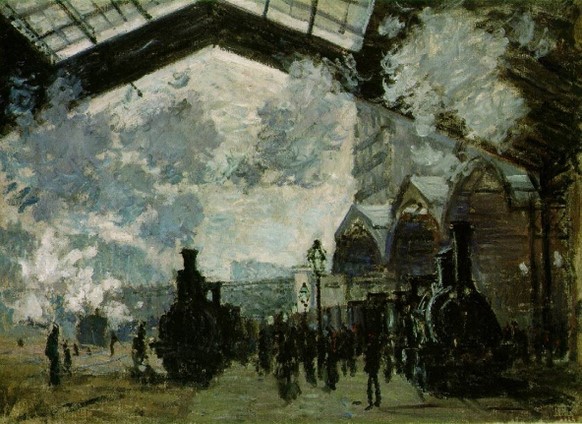
The Saint-Lazare Station. 1877. Claude Monet. Musée d’Orsay, Paris, France.
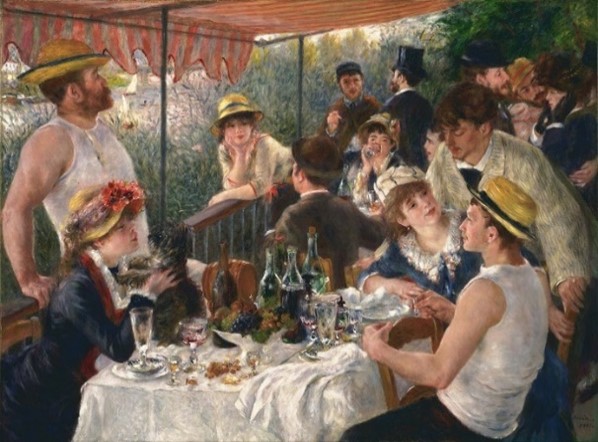
Luncheon of the Boating Party. 1881. Pierre-Auguste Renoir The Phillips Collection, Washington D.C.
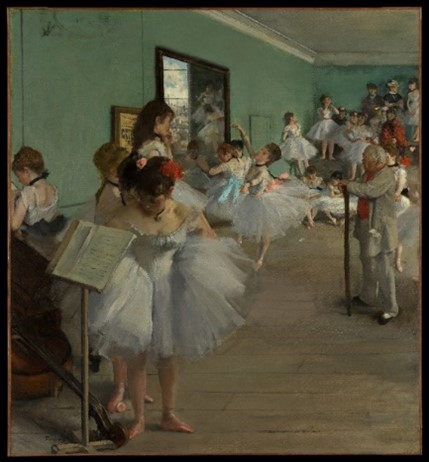
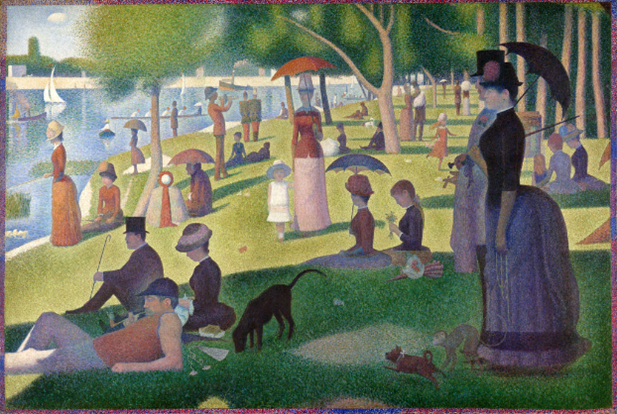
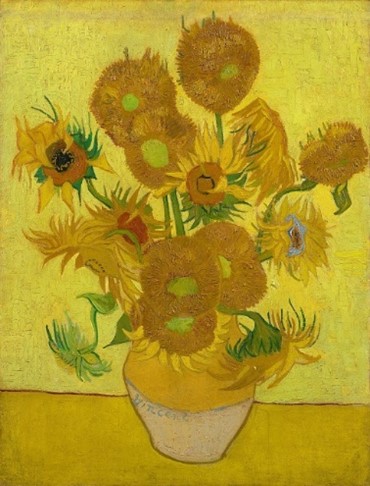
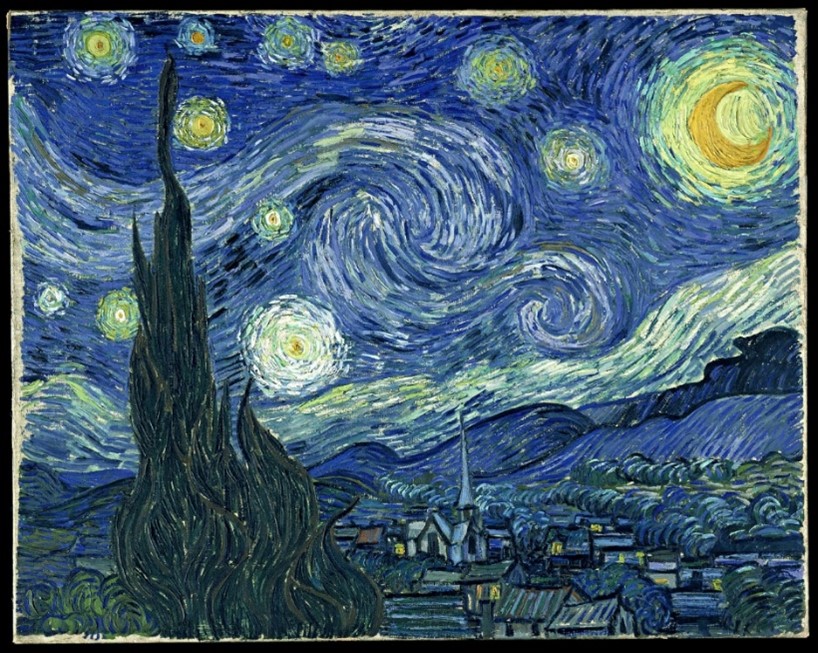
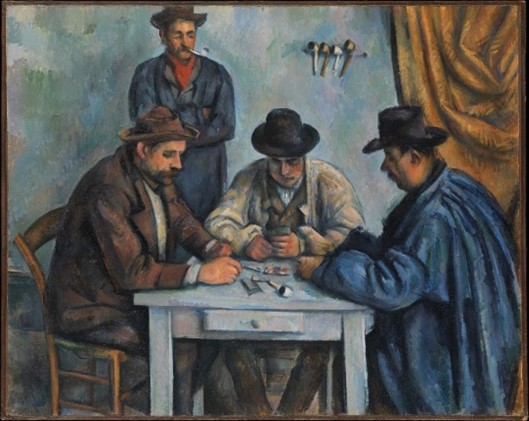
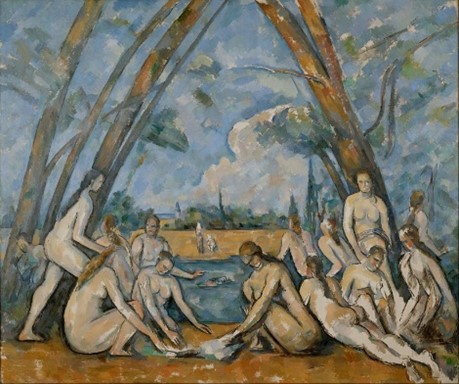
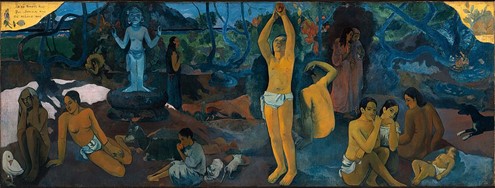
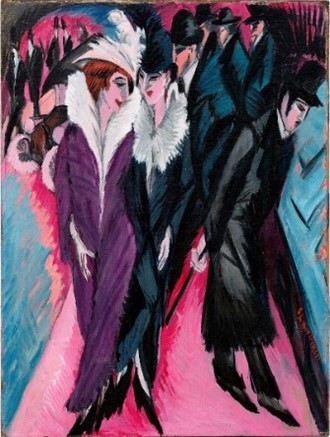
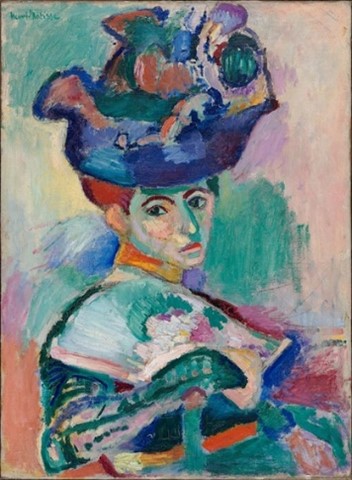
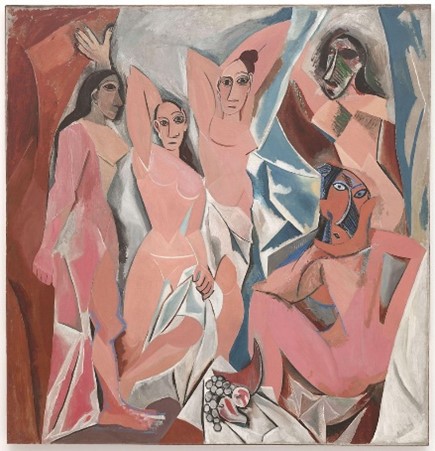
The Style of Modern Art
Art historians agree that modern art begins with the Impressionists and ends with Pop Art. Between these two styles of art there were many different modern art movements and encompassed new visual mediums beyond traditional arts, including:
- Impressionism (1870- 1880)
- Post-impressionism (1886-1904)
- Fauvism (1905 – 1907)
- Expressionism (1905-1907)
- Cubism (1908- 1914)
- Futurism (1909-1944)
- Dadaism (1916-1924)
- Surrealism (1924-1950)
- Abstract Expressionism (1940-1950)
- Pop Art (1950s- 1960s)
The Beginning of Modern Art
Modern art begins with the Industrial Revolution in the mid-19th century. The railway, steam engine and subway changed the course of bringing even more jobs to the city. Suburbanites took swiftly moving trains into work, while city dwellers, enjoyed Sunday afternoon in the country.
Populations in cities began to grow, especially in cities such as Paris. In 1853, Emperor Napoléon III commissioned architect and urban planner Georges-Eugène Haussmann to create new buildings, widen sidewalks and create parks for people to enjoy. Painters were there capturing everyday life of the modern world on canvas, with fresh ideas.
Modern Art War and Commerce
Modern art was influenced by war with Europe’s World War I (1914-1918) and The Spanish Civil War (1936-1939). During World War II (1939-1945) many European artists left for New York, which became the center for art.
Economic downfalls with the Black Monday and the stock market crash of 1929, led to the Great Depression (1929-1939).
Art and painters reflected the new modern reality of life and artists explored socially liberal thoughts and trends in modernist art and new art movements.
Édouard Manet’s Role in Modern Art’s Beginning
Édouard Manet (1832-1883) was the bridge between Realism and Impressionism. His shocking painting Luncheon on the Grass caused a scandal at the Paris Salon, when it was exhibited in 1863.
The artwork illustrates two fully dressed men having a picnic on the grass, with two women, one entirely nude. Both the content and composition were borrowed from the Renaissance painting Pastoral Concert by Giorgione (1510). While the earlier work makes classical reference to ancient literature, Manet’s work is clearly about modern French society.
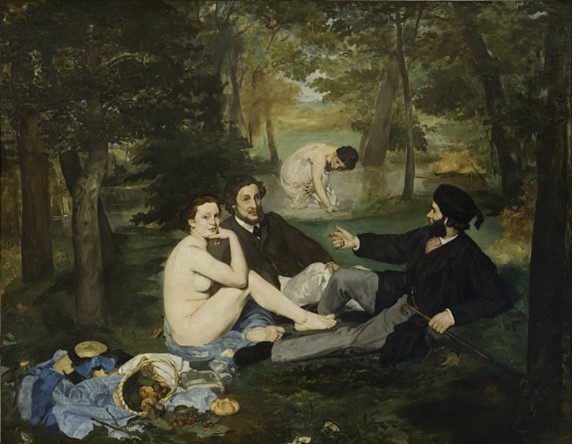
Édouard Manet was a member of Paris’s upper-middle class (bourgeoisie). The artist was the only one of his contemporaries who didn’t have to sell his paintings to earn a living. Although his father wanted him to study law, Manet still preferred art. Manet loved the work of artists Courbet, Velazquez, and Goya.
“Everything is mere appearance, the pleasures of a passing hour, a midsummer night’s dream. Only painting, the reflection of a reflection – but the reflection, too, of eternity – can record some of the glitter of this mirage.” – Édouard Manet
Impressionism (1870- 1880)
Art historians consider Impressionism to be the start of when modern art begins. Originating in France in the 1860s, Impressionism continued onward until the late 1880s. The Impressionists worked to capture the scenes of everyday middle-class life, focusing on a single moment in time. Impressionist artists dismissed the earth toned paints and flat brush strokes of Realism. These painters chose to use a livelier palette, applied with short dabs of color.
Fascinated with natural light and color, these modern artists experimented with painting plein air, without the use of black or chiaroscuro shading. Paintings often were cropped as influenced by photography and the modern era.
Rejected by the Paris Salon, French painters Édouard Manet, Claude Monet( 1840-1926), Pierre-Auguste Renoir (1841-1919) Camille Pissarro (1830-1903), Alfred Sisley (1839-1899), Edgar Degas (1834-1917), along with two dozen others organized their own exhibit in 1874. It was the first of eight in total that lasted until 1886. This was impressive considering the “New Painting” as it was initially called was deemed an artistic failure in the art world, during the early decades.
Monet’s Impression, Sunrise (1872) Paris’ Musee Marmottan Monet captures the orange rising sun over the gray waters of port of Le Havre, as boats float by. The contrasting colors create an illumination of the sun on the water. The name of the painting provided critics with the source they needed to define the paintings they viewed.
In Monet ‘s The Saint-Lazare Station, now in Musée d’Orsay, in Paris, the train, a symbol of modernity, is clouded by smoke as it moves into the station. People are waiting on the outdoor platform with Hausmann’s architecture creating a backdrop for the modern era.
Renoir enjoyed painting Parisians at leisure. Luncheon on the Boating Party (1881) is a work he painted of his friends enjoying a meal together at a restaurant overlooking the water.
Degas is most famous for artistic work in capturing the movements of the ballerinas at the Paris Opéra Ballet, in works such as The Dance Class (1874) featuring ballet master Jules Perrot, and ballerinas rehearsing.
Post-Impressionism (1886-1904)
Post-Impressionism started in 1886, in France, then moved across Europe, reflecting art in a diversity of forms. Commonality existed in the creation of artworks with fresh ideas, in reaction to Impressionism. Post-Impressionists such as Vincent Van Gogh (1853 – 1890), Paul Cézanne (1839 –1906), Paul Gauguin (1848- 1903), and Georges Seurat (1859- 1891) used unconventional style, including flat, rapid application of paint, and the use of color to create psychological effect. Yet, the work of each of the Post-Impressionists was vastly different.
Seurat wanted to add science to Impressionism using color to create luminosity, it what was termed Neo-Impressionism. In A Sunday on La Grande Jatte—1884, (1884-1886) the artist creates this by using optical mixture, or by placing two colors side by side, using tiny dabs of color, or pointillism, to give the illusion of blended color.
For Dutch painter Vincent Van Gogh Post-Impressionism was all about color as portrayed in his works of irises, blooms and landscapes filled with wheat. He was also a Symbolist who wanted to add deeper meaning to his work.
Of all flowers he loved sunflowers, which he started painting upon moving to Paris. In fact, sunflowers appear in some of his most famous art. He painted a collection of five works of sunflowers in a vase, while living in south France between 1888-1889. In these works, yellow is incorporated in many different shades. Van Gogh felt sunflowers represented gratitude.
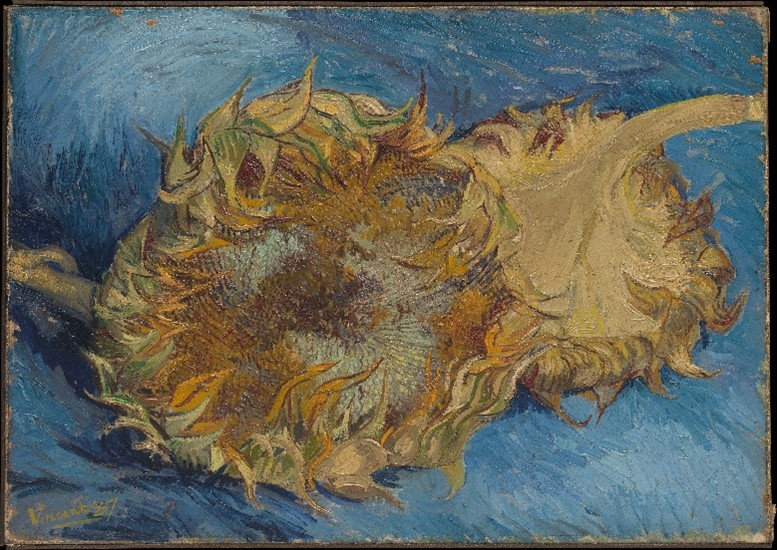
In The Starry Night (1889) Van Gogh chose to represent the night sky. In a letter to Willemien van Gogh, in September of 1888, the artists wrote, “It often seems to me that the night is even more richly colored than the day, colored in the most intense violets, blues, and greens. If you look carefully, you’ll see that some stars are lemony, others have a pink, green, forget-me-not blue glow…it’s clear that to paint a starry sky it’s not nearly enough to put white spots on blue-black.”
Vincent Van Gogh paints a night landscape with swirling strokes of vivid color. The sky, with the bright yellow moon and stars becomes the focal, point due to the low horizon. Although living in France at the time, the town, with its church steeple, is more characteristic of Holland, perhaps alluding to his displacement. Works such as this one would have a strong impact on Expressionism.
The works of French painter Paul Cézanne change depending on where the viewer is standing. Up close, his paintings appear flat, but when viewed from further away appear three dimensional. He achieved these using shadows, or even by outlining objects in black.
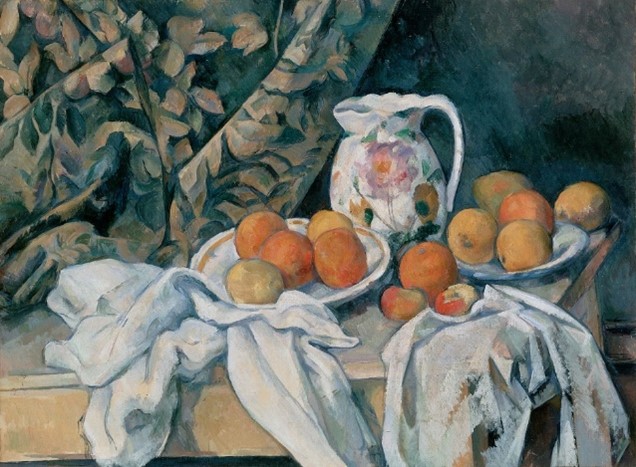
In The Card Players (1890-1892) a series of five works, Cézanne made sketches of individual men and then worked the subjects into a composition. While the people appear static, the décor and clothing they wear appears to be shifting.
In his artistic work The Large Bathers (1898-1906) Cézanne gives a modern art twist to the subject of the classical female nude. Here the women are not goddesses of mythology but female forms that have been elongated, flattened, and deconstructed to be part of the composition the artist envisioned.
Where Do We Come From? What Are We? Where Are We Going? (1897-1898) is a masterpiece by Paul Gauguin masterpiece. The painting represents the cycle from girl to woman, as seen through the female perspective of Tahitian life. Paul Gauguin had famously left France to live among the Tahitian people, from which the subject matter for many of his works was derived.
Fauvism (1905- 1907)
Fauvism, a term given by French art critics was derived from the French term fauves, meaning wild beast. French-born artists such as Henri Matisse (1869 -1954) and André Derain (1880–1954) favored bright primary colors, secondary colors, and distinctive brush stokes, producing landscape and figure paintings. These artists found influences in the exploration of African and non-Western cultures.
In Matisse’s The Woman with a Hat (1905) the artist paints his wife Amelia in brilliant expressive colors. This was a new way of painting a portrait through modernist art.
In Goldfish by Henri Matisse, (1912) at the Pushkin Museum, Moscow, the artist creates a still life in abstract form. The flattened, vivid orange goldfish can be viewed from two sides simultaneously. His expert use of complementary colors placed side by side works to saturate the hues. Goldfish was influenced by Henry Matisse’s travels to Morocco, and the fish he bought for his own living room afterwards, lending a cross-cultural element.
André Derain’s The Dance (1910) now in a private collection, combines the influence of Romanesque sculpture, Folk art, and African masks influences, with the bold color palette of Fauvism, set in an exotic locale.
Matisse also worked with sculpture early in his career, continually working on curvy female nudes. In contrast, Derain’s sandstone sculpture Crouching Man, (1907) at Museum Moderner Kunst, Vienna, Derain reduces the man to a block shaped form.
Expressionism (1905-1907)
Expressionism had reoccurring elements that while intensely personal to the artists, were able to draw the viewer into the emotional context, through distorted images and color used to provoke reactions. Expressionists were not concerned with physical reality in the art world.
Expressionism: Die Brücke
Two groups formed in Germany that helped to define Expressionism. Die Brücke (The Bridge) began in 1905 and was led by Ernst Ludwig Kirchner (1880 –1938) and also included founding members Fritz Bleyl (1880 – 1966), Erich Heckel (1883 –1970) and Karl Schmidt-Rottluff (1884 –1976). Considering themselves a bridge between art of the past and art of the present, they had a goal of merging German Gothic and Medieval art, and the female nude with Expressionism.
The Poster for the first Die Brücke Exhibition, a color lithograph, was designed by Bleyl in 1906. The work that featured a partially abstracted nude female form, used as an expression of the group’s thoughts on open sexuality, was deemed to risqué for the public.
In Kirchner’s Street, Berlin (1913) two prostitutes, followed by a path of men, are elongated, and flattened, in an environment of unnaturally colored cityscape backdrops, with heightened colors of pink skin tones.
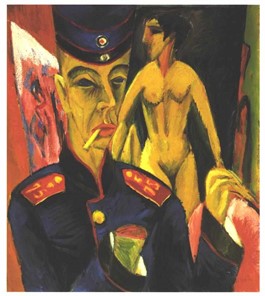
Self Portrait as a Soldier (1915) on display at the Allen Memorial Art Museum, in Ohio, is a result of the anxiety Kirchner experienced in the military. In clashing colors of green, orange, and yellow, the work, including a nude, have angular, jarring shapes.
Read Full Article on Die Brucke
Expressionism: Der Blaue Reiter
Meanwhile Der Blaue Reiter (The Blue Rider) including painters Wassily Kandinsky (1866 –1944), Franz Marc (1880-1916) and Gabriele Münter (1877-1962) explored abstraction. Kandinsky was most stirred by music and wanted to capture the auditory experience on canvas. He saw color in music in what may have been synesthesia, a neurological condition that is rare. His work Improvisation 28 (second version), painted in 1912, and housed at Solomon R. Guggenheim Museum, in New York is one such example.
Cubism (1908- 1914)
While Spanish artist Pablo Picasso (1881-1973) contributed to many art movements, he was the founder of Cubism, along with French artist George Braque (1882-1963). Cubism is categorized as an art style that includes both geometric and fragmented forms to allow objects to be viewed from many angles and vantage points.
In Picasso’s Les Demoiselles d’Avignon (The Young Ladies of Avignon) from 1907, the artist depicts prostitutes in abstract forms, using jagged lines, turning what should be viewed as desirable into something aggressive. Influenced by African masks, the faces have a primitive quality.
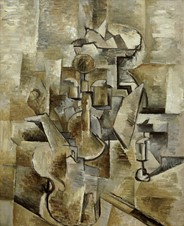
Georges Braque’s Cubist paintings Violin and Candlestick (1910) as well as The Portuguese (1911) are two examples where the artist uses a monochromatic tone to emphasis fragmentation.
Read Full Articles on Cubism, Analytic Cubism and Synthetic Cubism
Futurism (1909-1944)
Futurism aimed to express the speed of new technology in planes, trains, and automobiles. Beginning in the early 20th century, Italian poet Filippo Tommaso Marinetti (1876 – 1944). Other notable modern artists included Umberto Boccioni (1882- 1916), Carlo Carrà (1881-1966), Giacomo Balla (1871 -1958) and Gino Severini (1883 –1966).
Severini worked to combine painting with sculpture to give works a three-dimensional quality. In Dancer at Pigalle (1912) at the Baltimore Museum of Art, in Baltimore, Maryland, the focus is the dancer in the center. Created using oil paint on shaped plaster, on canvas, the result gives a swirling element to the Futurist artwork.
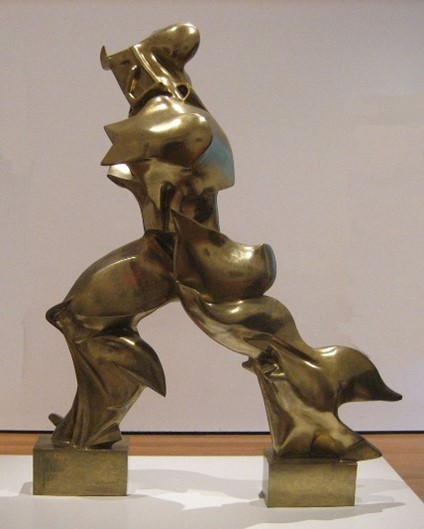
Boccioni’s masterful Unique Forms of Continuity, at Museum of Modern Art, in New York creates a superhuman sculpture that embodies booth strength and structure, while looking windswept. The original was created in plaster. A more recent artistic production was not cast in bronze until after the artist’s death.
Dadaism (1916-1924)
Dadaism started in Zurich, Switzerland, in 1916. Afterwards it spread to Germany, France, and the United States. Marcel Duchamp’s (1887-1986) infamous 1917 Fountain “sculpture” is a true example of Dadaism and readymade objects that bordered on absurd. Buy taking a urinal and placing it on its back, then signing it, he sparked much debate on what could be considered art.
German artists Hannah Höch, (1889 –1978), created photomontages by combining images that at first appeared uncomplimentary, but told narratives on feminism in the modern era.
Other modern artists of note included German/French artist Jean Arp (1886 – 1966), and Austrian Raoul Hausmann (1886-1971).
Surrealism (1924-1950)
Originally a member of the Dada group, French artist André Breton (1896- 1966) started the Surrealist movement in New York in 1924. He focused on collage and printmaking, while writing several books.
Surrealism comes from the French word meaning “super reality”. Breton defined Surrealism as “psychic automatism in its pure state, by which one proposes to express – verbally, by means of the written word, or in any other manner – the actual functioning of thought.”
These modern artists experimented in artworks based on the subconscious, and dreams. Salvador Dali’s (1904 –1989) The Persistence of Memory (1931) at the Museum of Modern Art, in New York sets melting watches in landscape that appears from another world. Here time has no bearing.
Birthday (1942) is a self portrait of the American artist Dorothea Tanning (1910-2012) made for her 30th birthday, with background images from her unconscious mind and ideas about the course of life and changes within oneself. Eine Kleine Nachtmusik (1943) is one of her most famous artworks. The painting which hangs in the Tate Modern, London is set in an eerie hotel corridor, where a gigantic sunflower is broken and torn. A girl and a life-sized doll are terrified by the display.
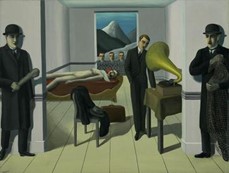
The works of Belgian-born Surrealist artist René Magritte (1898–1967) pose many questions without revealing answers. Common visuals continually appear such as pipes, bowler hats, the blue sky, and green apples. In The Menaced Assassin, a naked woman is lying on a sofa, with her throat slit. Meanwhile a man calmly ignores the situation, while playing a phonograph. Two detectives, both in suits and bowler hats, stand against a wall just outside of the room. One holds a baton and the other a net. Three bobbing heads outside look through the window. How did this woman end up here?
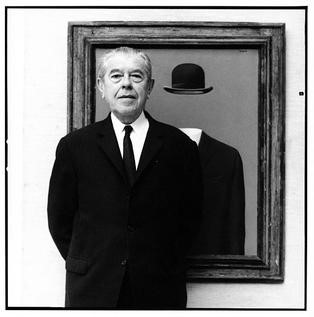
Like Marcel Duchamp, but with a more recent artistic production, German born Swiss artists Meret Oppenheim (1913 – 1985) took readymade objects to assemble her sculptural piece entitled Object (Le Déjeuner en fourrure), also at The Museum of Modern Art, in New York. The Surrealist work asks viewers to imagine what it would be like to hold a teacup, covered in Chinese gazelle fur.
Abstract Expressionism (1940-1950)
Abstract Expressionism was a period of American art between 1940 and 1950, that was influenced by previous European styles including Fauvism and Surrealism, from which it took the notion of subconscious creation.
In his oil on canvas work entitled Autumn Rhythm: Number 30 (1950) on display at the Metropolitan Museum of Art, in New York, artist Jackson Pollock (1912-1956) adds black, white, and beige paint. These colors are layered to give a visual of constant movement, through lines of various lengths and thicknesses, both curvaceous and straight. Jackson’s work, Blue Poles (1952) at the National Gallery in Canberra, Australia, contains shards of glass and even footprints.
Dutch American painter Willem de Kooning, (1904-1997) favored painting distorted human figures, particularly of women, that blended into the background such as Seated Woman (1940) at the Philadelphia Museum of Art.
Other noteworthy Abstract Expressionists included American artists Helen Frankenthaler (1928-2011) and Mark Rothko (1903-1970), along with Canadian artist Jean-Paul Riopelle (1923 -2002).
Read Full Article on Abstract Expressionism
Pop Art (1950s- 1960s)
Pop Art which began in the late 1950s in England, and spread to the United States, is considered by art historians to be the last influential movement in Modern Art. Pop Art celebrated consumerism and everyday objects became subjects in artworks.
American artist Andy Warhol (1929-1987) referenced mass produced commercial goods with his Campbell’s Soup Cans. Each of the 32 canvasses represent a flavor.
Pop Artist Roy Lichtenstein (1923-1997) added Ben-Day dots on his canvases, a printing technique used in creating comic strip. His work Whaam! (1963) at the Tate Modern in London transplants war images into cartoons.
Modern Architecture
Swiss-French architect Le Corbusier (1887-1965) used influences from modern technology, such as planes, trains, and automobiles for his architectural works. The architect designed Villa Savoye (1929) with concrete and glass, in International Style, using Five Points of Architecture. Le Corbusier used reinforced concrete stilts or pilotis to lift the structure up, an open floor plan, ribbon windows and a roof top garden.
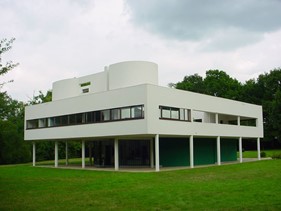
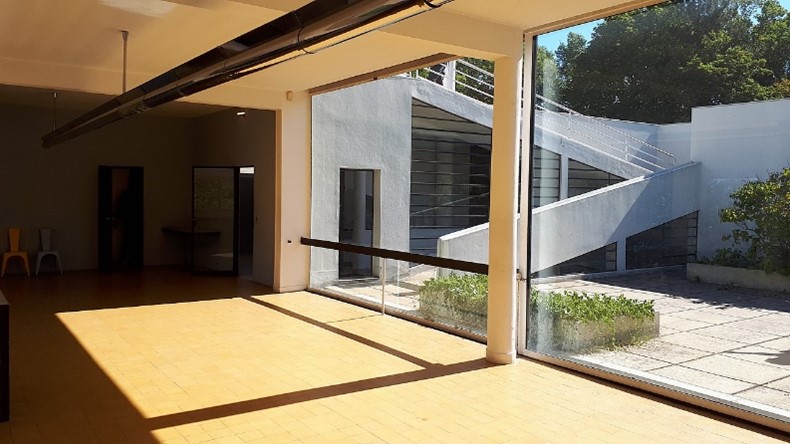
Famed American architect Frank Lloyd Wright (1867-1959) built Fallingwater his masterpiece of Prairie Style architecture, in Pennsylvania, in 1937. Fallingwater has elongated lines, which blend into the nature around it. He achieved this by limiting the color palette to ocher and red based on the surrounding of the natural rock. Rooms filled with windows allowed views of the outside.
The Decline of the Modern Era
Modern art would start to decline making way for Postmodern art and Contemporary art.
Modern Art Movements and Styles
- Impressionism
- Post-impressionism
- Fauvism
- Expressionism
- Cubism
- Futurism
- Dadaism
- Abstraction
- Surrealism
- Abstract Expressionism
- Pop Art
Related Art Terms
- Plein air
- Optical mixture
- Pointillism
- Symbolism
- Die Brücke
- Der Blaue Reiter
- Photomontage
- Automatism
- Ben-Day dots
Impressionism Artists
- Édouard Manet (1832-1883) French
- Claude Monet (1840-1926) French
- Pierre-Auguste Renoir (1841-1919) French
- Camille Pissarro (1830-1903) French
- Alfred Sisley (1839-1899) French
- Edgar Degas (1834-1917) French
Post-Impressionism Artists
- Vincent van Gogh (1853 – 1890) Dutch
- Paul Cézanne (1839 -1906) French
- Paul Gauguin (1848 -1903) French
- Georges Seurat (1859- 1891) French
Fauvism Artists
- Henri Matisse (1869 -1954) French
- André Derain (1880-1954) French
Expressionism Artists
- Ernst Ludwig Kirchner (1880 –1938) German
- Fritz Bleyl (1880 -1966) German
- Erich Heckel (1883 -1970) German
- Karl Schmidt-Rottluff (1884 –1976) German
- Wassily Kandinsky (1866 –1944) Russian
- Franz Marc (1880-1916) German
- Gabriele Münter (1877-1962) German
Cubism Artists
- Pablo Picasso (1881-1973) Spanish
- George Braque (1882-1963)
Futurism Artists
- Filippo Tommaso Marinetti (1876 – 1944) Italian
- Umberto Boccioni (1882- 1916) Italian
- Carlo Carrà (1881-1966) Italian
- Giacomo Balla (1871 -1958) Italian
- Gino Severini (1883 –1966) Italian
Dadaism Artists
- Marcel Duchamp (1887-1986) French
- Hannah Höch (1889 -1978) German
- Jean Arp (1886 -1966) German/French Austrian
- Raoul Hausmann (1886-1971) Austrian
Surrealism Artists
- André Breton (1896- 1966) French
- Salvador Dali (1904 -1989) Spanish
- Dorothea Tanning (1910-2012) American
- René Magritte (1898-1967) Belgian
- Meret Oppenheim (1913-1985) German/ Swiss
Abstract Expressionism Artists
- Jackson Pollock (1912-1956) American
- Willem de Kooning, (1904-1997) Dutch
- Helen Frankenthaler (1928-2011) American
- Mark Rothko (1903-1970) American
- Jean-Paul Riopelle (1923 -2002) Canadian
Pop Art Artists
- Roy Lichtenstein (1923-1997)
- Andy Warhol (1929-1987) American

